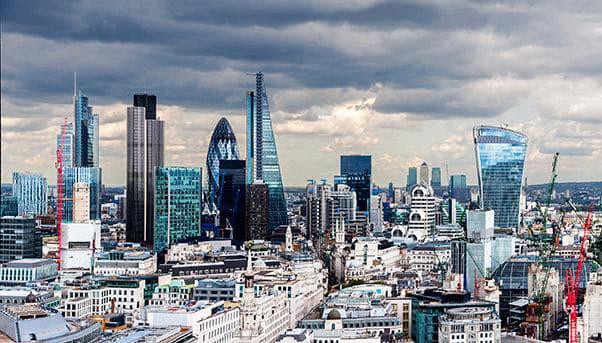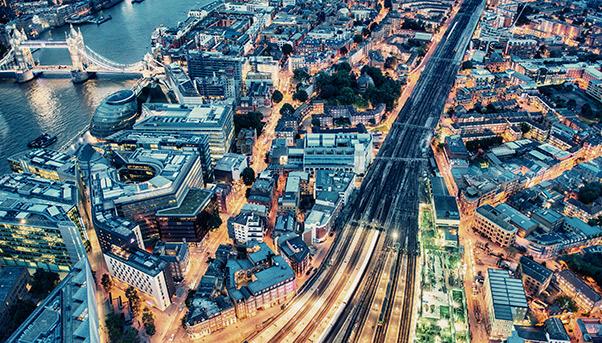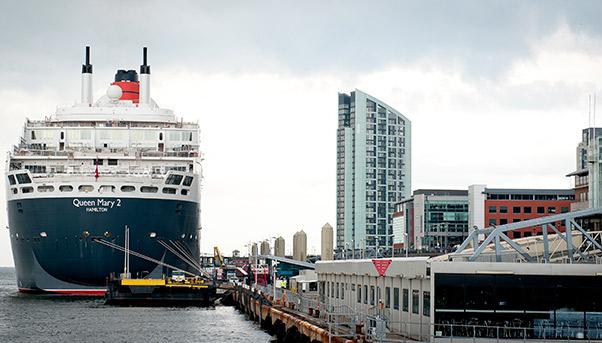
The United Kingdom has launched a five-year plan that will nearly double the amount of money that it will dedicate to improving the country’s infrastructure. The plan, entitled the National Infrastructure Delivery Plan 2016-2021, has identified 600 projects in which to invest a combined total of £483 billion.
“The government is laying the foundations for improved infrastructure, a more productive economy and a better society for decades to come,” reads the foreword jointly signed by George Osborne, Chancellor of the Exchequer, and Lord O’Neill of Gatley, Commercial Secretary to the Treasury, in the document detailing the plan’s ambitions.
Presented last March, it succeeds a plan that had overseen the investment of £250 billion in 3,000 projects dating back to 2010.
The plan will be overseen by two bodies created by the government at the beginning of the year: the Infrastructure and Projects Authority (IPA) and the National Infrastructure Commission.
The plan foresees investments in various sectors: from transport to energy, to communications and social infrastructure.
The government intends to put up £100 billion of the total amount to be invested and seek the participation of private investors to cover the rest.
Slightly more than half of the £483 billion to be spent during the life of the plan will go to projects in three sectors: energy (£117.4 billion), transport (£88.4 billion) and social infrastructure, such as schools, prisons and other structures (£48.6 billion).
The NIDP will redo the Roads
Of the £88.4 billion slated for the transport sector, £12.6 billion will go to roads and highways. Highways England is the public entity responsible for them, and it has prepared the work to be done in two phases. The first, Road Period 1, will run between 2015 and 2020, while the second, Road Period 2, will go beyond that date. The work will involve managing, maintaining and improving the quality of the roads. In the second phase, an additional £3 billion will be spent every year.
In Road Period 1, Highways England will look to improve road safety (with the goal of reducing by 40% the number of fatalities by 2020) and increase driver satisfaction with less traffic congestion and time spent in vehicles. The projection of cyclists and pedestrians will also be a priority.
When it comes to specific projects, the plan foresees 1,300 miles of new roads under key projects, including the maintenance of 21 miles along Highway A14 between Cambridge and Huntingdon (£1.5 billion); the maintenance of A1 towards the north (£1 billion); and the transformation of the A303/A30/A358 corridor into an expressway (£2 billion).

The National Infrastructure Delivery Plan: Investing in Metal
Another £46.2 billion slated for the transport sector will be destined for the country’s railways in order to modernize – if not build out – its infrastructure.
The investment will give a boost to a part of the transport sector that already generates £10 billion in added value for the economy every year. This is the result of the extensive development underwent by the railways in the last two decades, enabling it to carry double the passengers, whose numbers keep growing at an annual rate of 4%. Part of the planned investment (nearly £9.3 billion) will be used for the purchase of new trains and carriages (3,700, according to Rail Delivery Group, a rail operator), creating 2,000 jobs.
One of the most ambitious plans is the HS2, a new railway track that will link eight of the country’s 10 biggest cities, serving a fifth of the British population. The other big project is the Crossrail, a 118-kilometre line that will run through London and increase by 10% the transport capacity of the capital, linking densely populated areas near Heathrow with the City and Canary Wharf. The line, which should be inaugurated in 2018, will be named after Queen Elizabeth.
A lot of money will be spent to improve the national railway network to improve the efficiency of its lines between cities as well as modernize its train stock. In particular, £5.7 billion will be set aside for the Intercity Express, which handles some of the most congested routes in the country.
Ports and Airports are part of the National Infrastructure Delivery Plan
Ports and airports are one sector in which United Kingdom excels among developed countries. Indeed, the civil airport network is the third biggest in the world after the United States and China, while its ports handle 95% of the merchandise by weight that enters and leaves the country.
Although this sector needs fewer investments than others, it will nevertheless receive £5.4 billion, nearly all of which for the development of three big airports: Manchester, Heathrow and Gatwick.

Infrastructure for the Well-Being of Citizens
A number of projects under the National Infrastructure Delivery Plan 2016-2021 will focus on urban renewal and others defined as social infrastructure.
In the first category, the government will assign £9 billion for the construction of new housing for low-income families in what has been described as the most important housing programme since the 1970s. Such is its ambition that it could lead to the creation of 400,000 homes with a significant impact on job creation.
The second category – social infrastructure – foresees an investment of $48.6 billion for the construction of 500 schools with 600,000 posts for children, nine prisons, and hospitals for Brighton, Birmingham and Cambridgeshire. The schools are the biggest commitment, taking in £23 billion of the total.
Osborne and Lord O’Neill could not be more emphatic in underlying the importance of the financial commitment being made by the government to the country’s airports, railways, roads and hospitals.
“Infrastructure shapes our lives. Transport links get us where we need to be, energy systems power our homes and businesses, and digital networks allow us to communicate. Infrastructure supplies us with clean water, takes away our waste and helps protect us from the elements. It is vital to improving our quality of life and integral to the creation of vibrant new places to live and work.”

